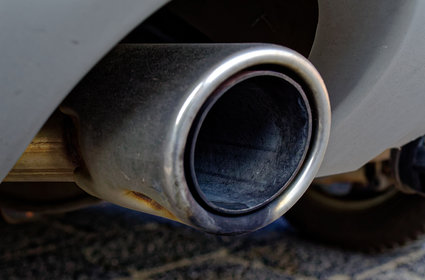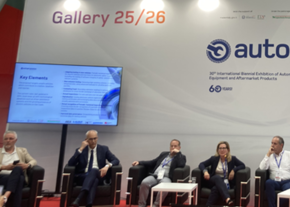
25/10/2019
Rde emission test gets the go ahead in Europe
Massimo Brunamonti
On September 1, 2019, phase two of the European RDE (Real Driving Emission) emission measurement standard for vehicles with ICE engines went into effect
On September 1, 2019, phase two of the European RDE (Real Driving Emission) emission measurement standard for vehicles with ICE engines went into effect. The news consists in applying RDE tests also to NOx emissions, in addition to particulate tests and WLTP tests; this brings to a completion the adoption of the new emission tests on all newly approved vehicles. The WLTP test (Worldwide harmonised Light vehicle Test Procedure), which came into force on September 1, 2017, checks emissions of CO2, pollutants and the vehicle’s fuel consumption, but the WLTP test is still a laboratory test, albeit more realistic and updated than the old NEDC cycle. The EU Commission worked on completing these emission tests making road-side tests or RDE tests for NOx emissions and particulate matter mandatory.
The RDE test is carried out by outfitting the vehicle with on-board emission measuring instruments. The test involves different environmental conditions, temperature, altitude, loads, speed, road conditions whether urban or suburban road, up-hills, down-hills and so on, with the aim of simulating the different driving conditions in order to ascertain that the emissions of the vehicle tested are within the legal limits in any condition. To date, RDE is, easily, the most demanding standard around the world, currently implemented only in Europe, which already provides for decreasing limits over the next few years. Although the new emission limits have required major investments, ACEA (European Association of Car Manufacturers) has welcomed its entry into force as a great leap forward in precise emissions evaluation with road tests confirming previous lab tests. The automotive industry is committed to complying with the new, stricter regulations and the results are already evident: over the last 15 years, technological innovation has progressively made an important contribution in reducing the limits of NOx and particulate matter.
The new anti-pollution systems are highly efficient and able to eliminate 99.9% of fine particulate matter, and NOx emissions are on average up to 84% lower than in, say, 15 year old vehicles.
RDE tests are being gradually implemented according to a timetable aimed at allowing the necessary changes in vehicle production. Since September 1, 2018, all light-duty vehicles and vans have been tested for particulate matter (RDE). From September 1, 2019, the same vehicle segments will undergo NOx and particulate test which will then be extended to heavy-duty vehicles. From September 1, 2020, NOx tests will also apply to heavy duty vehicles. From 2021 onwards, even lower limits will apply. Issues relating to the quality of the air we breathe, especially in urban areas, is unfortunately still improving rather slowly, due mainly to two factors. The first is the average age of the current continental fleet, around 11 years in the EU as a whole. The second, perhaps even more relevant, is vehicle maintenance. As far as NOx is concerned, a key role in meeting emission limits is the constant use of urea (better known as AdBlue) which, injected during combustion, activates a chemical reaction that reduces NOx.
Unfortunately, AdBlue costs money and some people have no qualms about tampering with the control units, thus avoiding topping up the additive. The second negative factor relates to failure in replacing the FAP (particulate filter) at the end of its life, which, might save money on the one hand, but frustrates the long-awaited reduction in particulate matter despite all the work that has already been done. Unfortunately, to date, both of these illegal practices are very difficult to detect and prosecute; Roadworthiness inspection often do not include these checks in most EU countries, despite the European Commission repeatedly sounding the alarm. Some countries (Holland, Belgium and Germany) are making a few steps forward introducing particulate testing in MOT tests, albeit with some difficulty, from 2021. We hope these steps will soon be confirmed and extended to the entire Union.
The RDE test is carried out by outfitting the vehicle with on-board emission measuring instruments. The test involves different environmental conditions, temperature, altitude, loads, speed, road conditions whether urban or suburban road, up-hills, down-hills and so on, with the aim of simulating the different driving conditions in order to ascertain that the emissions of the vehicle tested are within the legal limits in any condition. To date, RDE is, easily, the most demanding standard around the world, currently implemented only in Europe, which already provides for decreasing limits over the next few years. Although the new emission limits have required major investments, ACEA (European Association of Car Manufacturers) has welcomed its entry into force as a great leap forward in precise emissions evaluation with road tests confirming previous lab tests. The automotive industry is committed to complying with the new, stricter regulations and the results are already evident: over the last 15 years, technological innovation has progressively made an important contribution in reducing the limits of NOx and particulate matter.
The new anti-pollution systems are highly efficient and able to eliminate 99.9% of fine particulate matter, and NOx emissions are on average up to 84% lower than in, say, 15 year old vehicles.
RDE tests are being gradually implemented according to a timetable aimed at allowing the necessary changes in vehicle production. Since September 1, 2018, all light-duty vehicles and vans have been tested for particulate matter (RDE). From September 1, 2019, the same vehicle segments will undergo NOx and particulate test which will then be extended to heavy-duty vehicles. From September 1, 2020, NOx tests will also apply to heavy duty vehicles. From 2021 onwards, even lower limits will apply. Issues relating to the quality of the air we breathe, especially in urban areas, is unfortunately still improving rather slowly, due mainly to two factors. The first is the average age of the current continental fleet, around 11 years in the EU as a whole. The second, perhaps even more relevant, is vehicle maintenance. As far as NOx is concerned, a key role in meeting emission limits is the constant use of urea (better known as AdBlue) which, injected during combustion, activates a chemical reaction that reduces NOx.
Unfortunately, AdBlue costs money and some people have no qualms about tampering with the control units, thus avoiding topping up the additive. The second negative factor relates to failure in replacing the FAP (particulate filter) at the end of its life, which, might save money on the one hand, but frustrates the long-awaited reduction in particulate matter despite all the work that has already been done. Unfortunately, to date, both of these illegal practices are very difficult to detect and prosecute; Roadworthiness inspection often do not include these checks in most EU countries, despite the European Commission repeatedly sounding the alarm. Some countries (Holland, Belgium and Germany) are making a few steps forward introducing particulate testing in MOT tests, albeit with some difficulty, from 2021. We hope these steps will soon be confirmed and extended to the entire Union.






